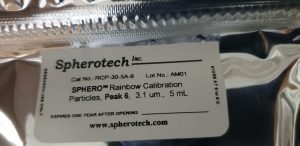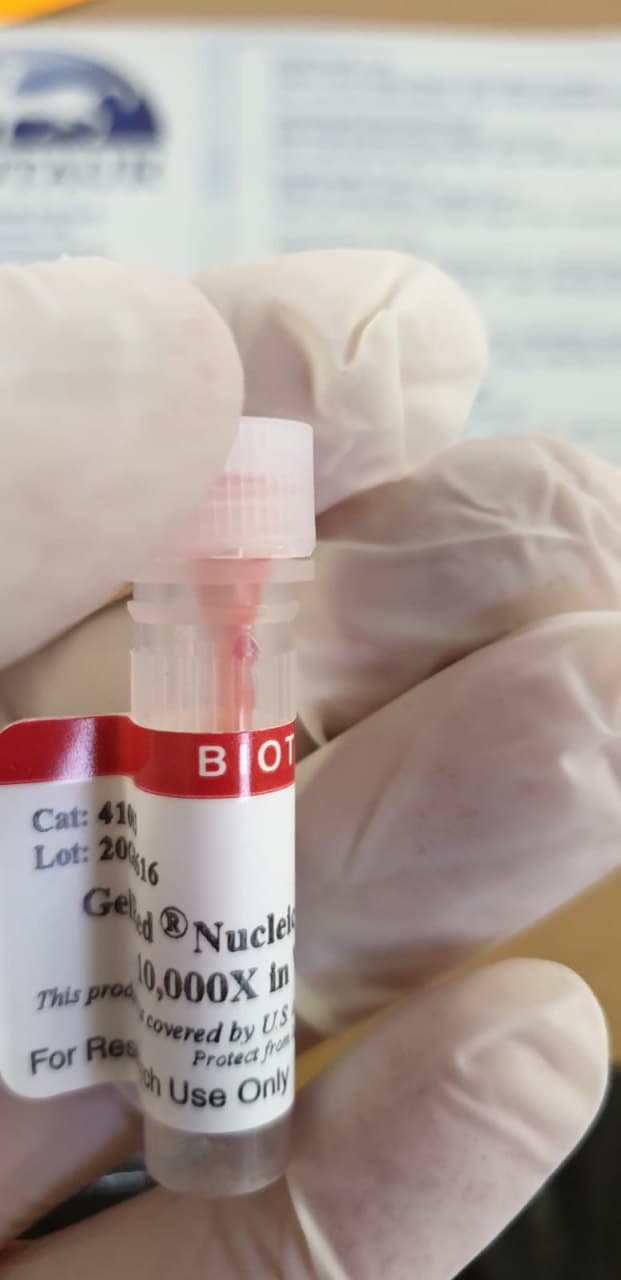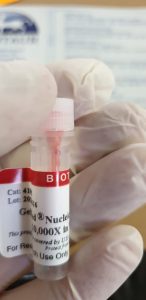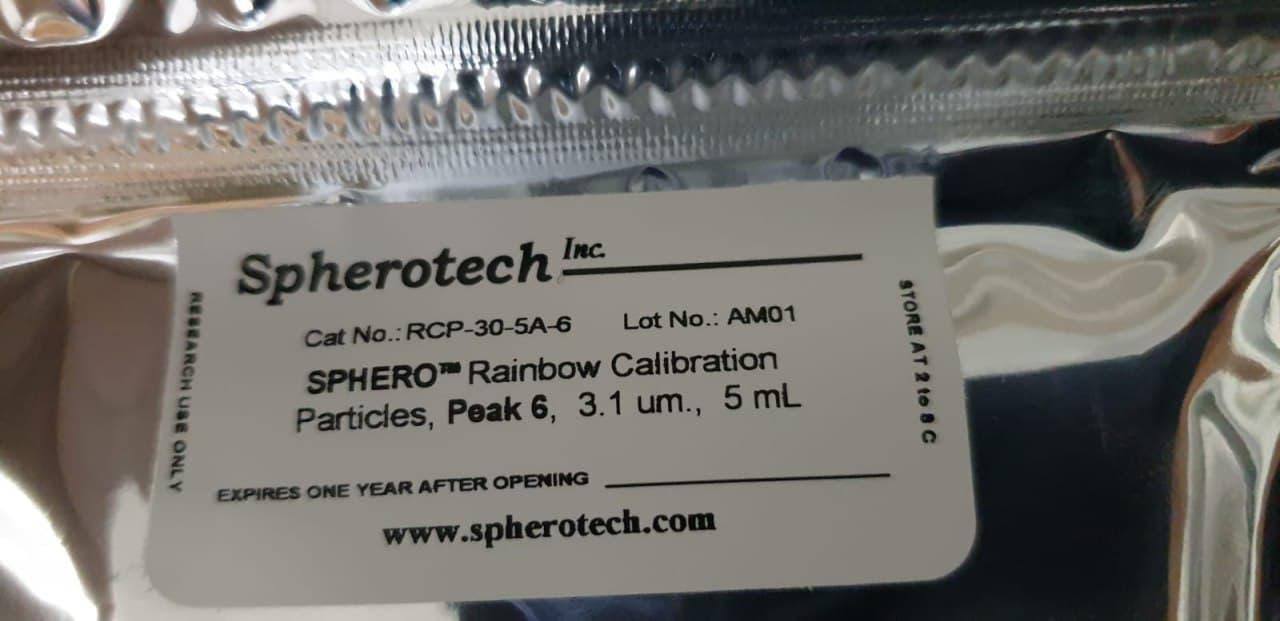Undoubtedly, microfluidics has been a focus of interdisciplinary science over the last twenty years, leading to many developments on this space. Centrifugal microfluidic platforms have good potential to be used in point-of-care gadgets as a result of they take benefit of some intrinsic forces, most notably centrifugal pressure, which obviates the necessity to any exterior driving forces. Herein, we introduce a newly designed detection chamber to be used on microfluidic discs that may be employed as an absorbance readout step in circumstances the place the ultimate resolution has a really low viscosity and floor stress.
In such conditions, our chamber simply eliminates the air bubbles from the ultimate resolution with none interruption. One microfluidic disc for measuring the hemoglobin focus was designed and constructed to confirm the proper functioning of this detection chamber. This disc measured the hemoglobin focus of the blood samples by way of the HiCN methodology. Then, the hemoglobin focus of 11 blood samples was quantified and in contrast with the clinic’s information utilizing the hemoglobin measurement disc, which included 4 hemoglobin measurement units, and every set contained two inlets for the blood pattern and the reagent, one two-part mixing chamber, and one bubble-free detection chamber.
The measured values of the disc had good linearity and conformity in contrast with the clinic’s information, and there have been no air bubbles within the detection step. In this examine, the usual deviation and the turnaround time have been ± 0.51 g/dL and 68 s, respectively. The highest discount ratio of 94.8% was realized by optimizing experimental parameters, which is enormously improved in comparison with standard zinc-cadmium based mostly approaches. Besides, modular optical detection improves the reliability of the transportable system, and a smartphone was used to attain a transportable and handy nitrate evaluation.
Many laboratory purposes using droplet microfluidics rely on precision syringe pumps for stream era. In this examine, the use of an open-source peristaltic pump primarily composed of 3D printed components and a low-cost industrial Venturi pump are explored for his or her use instead to syringe pumps for droplet microfluidics. Both gadgets supplied steady stream (<2% RSD) over a variety of 1-7 μL/min and excessive reproducibility in sign depth at a droplet era fee round 0.25 Hz (<3% RSD), that are comparable in efficiency to related measurements on commonplace syringe pumps.
As a novel stream era supply for microfluidic purposes, the use of the miniaturized Venturi pump was additionally utilized to droplet sign monitoring research used to measure adjustments in focus over time, with common sign reproducibility <4% RSD for each single-stream fluorometric and reagent addition colorimetric purposes. These low-cost stream strategies present steady stream ample for widespread droplet microfluidic approaches and might be applied in all kinds of easy, and probably transportable, analytical measurement gadgets.

Improving the analysis of bovine tuberculosis utilizing gold nanoparticles conjugated with purified protein spinoff: particular regard to staphylococcal protein A and streptococcal protein G
Different ancillary immunodiagnostic assessments have been traditionally-established for analysis of bovine tuberculosis (BTB) both mobile or humoral as tuberculin pores and skin take a look at (TST), gamma interferon (INF-γ), and oblique enzyme-linked immunosorbent assay (iELISA). These assessments had been consumed extra time and costly, and wanted subtle gear. To dissolve these issues, serological analysis relying on humoral immunity is the purpose of this work. Herein, slide-based agglutination take a look at was chosen as a fast and easy discipline take a look at primarily based on purified protein spinoff (PPD) antigen as well as to some supplementation supplies reminiscent of Staphylococcal protein A (SPA) and Streptococcal protein G (SPG) to enhance detection of BTB antibody in serum samples.
Gold nanoparticles (Au NPs) have been synthesized by gamma ray, and after full characterization, the synthesized Au NPs have been spherical, small-sized, and steady with none impurities. Addition of such supplementation reagents for serodiagnosis of tuberculosis is of paramount necessary for the detection of serum antibodies towards tuberculosis (TB) and it was thought-about an simply easy and potential method for bettering TB analysis. In this work, 70 animals examined optimistic for TST in addition to 20 animals examined detrimental for TST have been used for the analysis of BTB relying on humoral immune response primarily based on PPD slide agglutination take a look at utilizing reporter regents (SPA and/or SPG) both native or recombinant.
The agglutination density was recorded and skim in Four levels of positivity with scores starting from detrimental (-) to very sturdy response (++++) occurred in numerous occasions of agglutination. Groups confirmed 100% optimistic reactivates employed in Exp. 1, 2, and three with differentiation of slide agglutination take a look at density and was rated from reasonable positivity (2+) to very sturdy (4+), with predominant positivity in density of (3+). Pink-colored depth is related to the strengthened reactions between PPD-conjugated Au NPs and serum antibody of every examined samples, which permits for visible fast, easy, and efficient enticing analysis of BTB.
, tested for complement activity) Baby Rabbit Complement serum (Lyophilized), tested for complement activity |
|
COMPBR-10 |
Alpha Diagnostics |
10 ml |
EUR 634.8 |
, tested for complement activity) Baby Rabbit Complement serum (Lyophilized), tested for complement activity |
|
COMPBR-2 |
Alpha Diagnostics |
2 ml |
EUR 270 |
, tested for complement activity) Baby Rabbit Complement serum, Cell culture grade (Lyophilized), tested for complement activity |
|
COMPBR-1 |
Alpha Diagnostics |
1 ml |
EUR 196.8 |
, tested for complement activity) Baby Rabbit Complement serum, Cell culture grade (Lyophilized), tested for complement activity |
|
COMPBR-C-10 |
Alpha Diagnostics |
10 ml |
EUR 781.2 |
 Rabbit Complement Serum |
|
32R-CR001 |
Fitzgerald |
25 ml |
EUR 289.2 |
|
Description: Purifed Rabbit Complement isolated from blood of New Zealand white rabbits |
 RABBIT COMPLEMENT Serum Products |
|
GWB-Q00015 |
GenWay Biotech |
2 ml |
Ask for price |
, tested for complement activity) Standard Rabbit Complement serum (Lyophilized), tested for complement activity |
|
COMPR-2 |
Alpha Diagnostics |
2 ml |
EUR 343.2 |
, tested for complement activity) Standard Rabbit Complement serum (Lyophilized), tested for complement activity |
|
COMPR-20 |
Alpha Diagnostics |
20 ml |
EUR 489.6 |
, tested for complement activity) Standard Rabbit Complement serum (Lyophilized), tested for complement activity |
|
COMPR-5 |
Alpha Diagnostics |
5 ml |
EUR 343.2 |
 Innovative Grade US Origin Rabbit Complement Serum |
|
IGRBCSER10ML |
Innovative research |
each |
EUR 229 |
|
|
|
Description: Innovative Grade US Origin Rabbit Complement Serum |
 Innovative Grade US Origin Rabbit Complement Serum |
|
IGRBCSER25ML |
Innovative research |
each |
EUR 457 |
|
|
|
Description: Innovative Grade US Origin Rabbit Complement Serum |
 Innovative Grade US Origin Rabbit Complement Serum |
|
IGRBCSER50ML |
Innovative research |
each |
EUR 728 |
|
|
|
Description: Innovative Grade US Origin Rabbit Complement Serum |
 Innovative Grade US Origin Rabbit Complement Serum |
|
IGRBCSER5ML |
Innovative research |
each |
EUR 141 |
|
|
|
Description: Innovative Grade US Origin Rabbit Complement Serum |
, tested for rat cells) Low Toxicity Rabbit Complement serum (Lyophilized), tested for rat cells |
|
COMPR-LR-1 |
Alpha Diagnostics |
1 ml |
EUR 343.2 |
 Rat Complement Serum |
|
32R-CR005 |
Fitzgerald |
5 ml |
EUR 526 |
|
|
|
Description: Purifed Rat Complement isolated from blood of normal rats |
, tested for human cells) Low Toxicity Rabbit Complement serum (Lyophilized), tested for human cells |
|
COMPR-LH-1 |
Alpha Diagnostics |
1 ml |
EUR 343.2 |
, tested for human cells) Low Toxicity Rabbit Complement serum (Lyophilized), tested for human cells |
|
COMPR-LH-5 |
Alpha Diagnostics |
5 ml |
EUR 343.2 |
, tested for mouse cells) Low Toxicity Rabbit Complement serum (Lyophilized), tested for mouse cells |
|
COMPR-LM-1 |
Alpha Diagnostics |
1 ml |
EUR 343.2 |
 Mouse Complement Serum |
|
32R-CM001 |
Fitzgerald |
5 ml |
EUR 526 |
|
|
|
Description: Frozen high activity mouse complement serum |
 Hamster Complement Serum |
|
32R-CH001 |
Fitzgerald |
5 ml |
EUR 508.8 |
|
Description: Purified normal Hamster Complement isolated from blood |
 Guinea Pig Complement Serum |
|
32R-CP004 |
Fitzgerald |
5 ml |
EUR 447 |
|
|
|
Description: Purified Guinea Pig Complement adsorbed with mouse cells |
 Guinea Pig Complement Serum |
|
32R-CP006 |
Fitzgerald |
3 ml |
EUR 98 |
|
|
|
Description: Purified Guinea Pig Complement isolated from the blood of normal Hartley guinea pigs |
 Guinea Pig Complement Serum |
|
32R-CP007 |
Fitzgerald |
25 ml |
EUR 807.6 |
|
Description: Purified Guinea Pig Complement adsorbed with sheep red blood cells |
 Pooled Human Complement Serum |
|
ICSER100ML |
Innovative research |
each |
EUR 2338 |
|
|
|
Description: Pooled Human Complement Serum |
 Pooled Human Complement Serum |
|
ICSER10ML |
Innovative research |
each |
EUR 324 |
|
|
|
Description: Pooled Human Complement Serum |
 Pooled Human Complement Serum |
|
ICSER25ML |
Innovative research |
each |
EUR 748 |
|
|
|
Description: Pooled Human Complement Serum |
 Pooled Human Complement Serum |
|
ICSER50ML |
Innovative research |
each |
EUR 1327 |
|
|
|
Description: Pooled Human Complement Serum |
, tested for complement activity) Goat Complement serum, (Lyophilized), tested for complement activity |
|
COMPGT-1 |
Alpha Diagnostics |
1 ml |
EUR 270 |
, tested for complement activity) Rat Complement serum, (Lyophilized), tested for complement activity |
|
COMPRT-1 |
Alpha Diagnostics |
1 ml |
EUR 343.2 |
 Single Donor Human Complement Serum |
|
ICSERS10ML |
Innovative research |
each |
EUR 129 |
|
|
|
Description: Single Donor Human Complement Serum |
 Single Donor Human Complement Serum |
|
ICSERS2ML |
Innovative research |
each |
EUR 81 |
|
|
|
Description: Single Donor Human Complement Serum |
, tested for complement activity) Llama Complement serum, (Lyophilized), tested for complement activity |
|
COMPLA-1 |
Alpha Diagnostics |
1 ml |
EUR 343.2 |
, tested for complement activity) Mouse Complement serum, (Lyophilized), tested for complement activity |
|
COMPMO-1 |
Alpha Diagnostics |
1 ml |
EUR 343.2 |
 Human Complement C3 Deficient Serum |
|
D210110 |
AssayPro |
1 ml |
EUR 65 |
 Human Complement C4 Deficient Serum |
|
D210210 |
AssayPro |
1 ml |
EUR 65 |
 Human Complement C5 Deficient Serum |
|
D510110 |
AssayPro |
1 ml |
EUR 65 |
 Human Complement C1q Deficient Serum |
|
D710110 |
AssayPro |
1 ml |
EUR 65 |
, tested for complement activity) Standard G. Pig Complement serum (Lyophilized), tested for complement activity |
|
COMPG-1 |
Alpha Diagnostics |
1 ml |
EUR 270 |
, tested for complement activity) Standard G. Pig Complement serum (Lyophilized), tested for complement activity |
|
COMPG-5 |
Alpha Diagnostics |
5 ml |
EUR 343.2 |
 - for Serum or Plasma) Exo-Flow 2.0 Basic Kit without antibody (Streptavidin beads + reagents) - for Serum or Plasma |
|
EXOFLOW2-BASICA-SP |
SBI |
30 rxn |
EUR 1201.2 |
|
|
 Human Complement C1q/C4 Deficient Serum |
|
DD7101210 |
AssayPro |
1 ml |
EUR 110 |
 Innovative Grade US Origin Goat Complement Serum |
|
IGGTCSER10ML |
Innovative research |
each |
EUR 667 |
|
|
|
Description: Innovative Grade US Origin Goat Complement Serum |
 Innovative Grade US Origin Goat Complement Serum |
|
IGGTCSER25ML |
Innovative research |
each |
EUR 1586 |
|
|
|
Description: Innovative Grade US Origin Goat Complement Serum |
 Innovative Grade US Origin Goat Complement Serum |
|
IGGTCSER50ML |
Innovative research |
each |
EUR 3459 |
|
|
|
Description: Innovative Grade US Origin Goat Complement Serum |
 Innovative Grade US Origin Goat Complement Serum |
|
IGGTCSER5ML |
Innovative research |
each |
EUR 433 |
|
|
|
Description: Innovative Grade US Origin Goat Complement Serum |
 Human Complement Factor B Deficient Serum |
|
D700110 |
AssayPro |
1 ml |
EUR 65 |
 Human Complement Factor H Deficient Serum |
|
D700510 |
AssayPro |
1 ml |
EUR 65 |
 Human Complement Factor D Deficient Serum |
|
D770110 |
AssayPro |
1 ml |
EUR 65 |
 Innovative Grade US Origin Canine Complement Serum |
|
IGCNCSER10ML |
Innovative research |
each |
EUR 514 |
|
|
|
Description: Innovative Grade US Origin Canine Complement Serum |
 Innovative Grade US Origin Canine Complement Serum |
|
IGCNCSER25ML |
Innovative research |
each |
EUR 783 |
|
|
|
Description: Innovative Grade US Origin Canine Complement Serum |
 Innovative Grade US Origin Canine Complement Serum |
|
IGCNCSER50ML |
Innovative research |
each |
EUR 1484 |
|
|
|
Description: Innovative Grade US Origin Canine Complement Serum |
 Innovative Grade US Origin Canine Complement Serum |
|
IGCNCSER5ML |
Innovative research |
each |
EUR 356 |
|
|
|
Description: Innovative Grade US Origin Canine Complement Serum |
 Innovative Grade US Origin Porcine Complement Serum |
|
IGPCCSER10ML |
Innovative research |
each |
EUR 229 |
|
|
|
Description: Innovative Grade US Origin Porcine Complement Serum |
 Innovative Grade US Origin Porcine Complement Serum |
|
IGPCCSER25ML |
Innovative research |
each |
EUR 538 |
|
|
|
Description: Innovative Grade US Origin Porcine Complement Serum |
 Innovative Grade US Origin Porcine Complement Serum |
|
IGPCCSER50ML |
Innovative research |
each |
EUR 1012 |
|
|
|
Description: Innovative Grade US Origin Porcine Complement Serum |
 Innovative Grade US Origin Porcine Complement Serum |
|
IGPCCSER5ML |
Innovative research |
each |
EUR 141 |
|
|
|
Description: Innovative Grade US Origin Porcine Complement Serum |
 EZ-DNA Reagents |
|
BS8202 |
Bio Basic |
100preps |
EUR 105.67 |
|
|
 EZ-DNA Reagents |
|
SK8201 |
Bio Basic |
100preps |
EUR 112.2 |
|
|
 Innovative Grade US Origin Mouse CD1 Complement Serum |
|
IGMSCD1CSER10ML |
Innovative research |
each |
EUR 285 |
|
|
|
Description: Innovative Grade US Origin Mouse CD1 Complement Serum |
 Innovative Grade US Origin Mouse CD1 Complement Serum |
|
IGMSCD1CSER25ML |
Innovative research |
each |
EUR 574 |
|
|
|
Description: Innovative Grade US Origin Mouse CD1 Complement Serum |
 Innovative Grade US Origin Mouse CD1 Complement Serum |
|
IGMSCD1CSER50ML |
Innovative research |
each |
EUR 923 |
|
|
|
Description: Innovative Grade US Origin Mouse CD1 Complement Serum |
 Innovative Grade US Origin Mouse CD1 Complement Serum |
|
IGMSCD1CSER5ML |
Innovative research |
each |
EUR 178 |
|
|
|
Description: Innovative Grade US Origin Mouse CD1 Complement Serum |
 Innovative Grade US Origin Guinea Pig Complement Serum |
|
IGGPCSER10ML |
Innovative research |
each |
EUR 203 |
|
|
|
Description: Innovative Grade US Origin Guinea Pig Complement Serum |
 Innovative Grade US Origin Guinea Pig Complement Serum |
|
IGGPCSER25ML |
Innovative research |
each |
EUR 485 |
|
|
|
Description: Innovative Grade US Origin Guinea Pig Complement Serum |
 Innovative Grade US Origin Guinea Pig Complement Serum |
|
IGGPCSER50ML |
Innovative research |
each |
EUR 915 |
|
|
|
Description: Innovative Grade US Origin Guinea Pig Complement Serum |
 Innovative Grade US Origin Guinea Pig Complement Serum |
|
IGGPCSER5ML |
Innovative research |
each |
EUR 141 |
|
|
|
Description: Innovative Grade US Origin Guinea Pig Complement Serum |
 Innovative Grade US Origin Rat Wistar Complement Serum |
|
IGRTWICSER10ML |
Innovative research |
each |
EUR 305 |
|
|
|
Description: Innovative Grade US Origin Rat Wistar Complement Serum |
 Innovative Grade US Origin Rat Wistar Complement Serum |
|
IGRTWICSER25ML |
Innovative research |
each |
EUR 535 |
|
|
|
Description: Innovative Grade US Origin Rat Wistar Complement Serum |
 Innovative Grade US Origin Rat Wistar Complement Serum |
|
IGRTWICSER50ML |
Innovative research |
each |
EUR 1199 |
|
|
|
Description: Innovative Grade US Origin Rat Wistar Complement Serum |
 Innovative Grade US Origin Rat Wistar Complement Serum |
|
IGRTWICSER5ML |
Innovative research |
each |
EUR 176 |
|
|
|
Description: Innovative Grade US Origin Rat Wistar Complement Serum |
, tested for complement activity in thymocytes) Low Toxicity G. Pig Complement serum (Lyophilized), tested for complement activity in thymocytes |
|
COMPG-L-1 |
Alpha Diagnostics |
1 ml |
EUR 270 |
 Innovative Grade US Origin Mouse C57BL6 Complement Serum |
|
IGMSC57CSER10ML |
Innovative research |
each |
EUR 655 |
|
|
|
Description: Innovative Grade US Origin Mouse C57BL6 Complement Serum |
 Innovative Grade US Origin Mouse C57BL6 Complement Serum |
|
IGMSC57CSER25ML |
Innovative research |
each |
EUR 1311 |
|
|
|
Description: Innovative Grade US Origin Mouse C57BL6 Complement Serum |
 Innovative Grade US Origin Mouse C57BL6 Complement Serum |
|
IGMSC57CSER5ML |
Innovative research |
each |
EUR 408 |
|
|
|
Description: Innovative Grade US Origin Mouse C57BL6 Complement Serum |
 Innovative Grade US Origin Monkey Rhesus Complement Serum |
|
IGMNRSCSER100ML |
Innovative research |
each |
EUR 1160 |
|
|
|
Description: Innovative Grade US Origin Monkey Rhesus Complement Serum |
 Innovative Grade US Origin Monkey Rhesus Complement Serum |
|
IGMNRSCSER10ML |
Innovative research |
each |
EUR 240 |
|
|
|
Description: Innovative Grade US Origin Monkey Rhesus Complement Serum |
 Innovative Grade US Origin Monkey Rhesus Complement Serum |
|
IGMNRSCSER25ML |
Innovative research |
each |
EUR 384 |
|
|
|
Description: Innovative Grade US Origin Monkey Rhesus Complement Serum |
 Innovative Grade US Origin Monkey Rhesus Complement Serum |
|
IGMNRSCSER50ML |
Innovative research |
each |
EUR 602 |
|
|
|
Description: Innovative Grade US Origin Monkey Rhesus Complement Serum |
 Innovative Grade US Origin Monkey Rhesus Complement Serum |
|
IGMNRSCSER5ML |
Innovative research |
each |
EUR 200 |
|
|
|
Description: Innovative Grade US Origin Monkey Rhesus Complement Serum |
 Innovative Grade US Origin Canine Beagle Complement Serum |
|
IGCNBGCSER10ML |
Innovative research |
each |
EUR 238 |
|
|
|
Description: Innovative Grade US Origin Canine Beagle Complement Serum |
 Innovative Grade US Origin Canine Beagle Complement Serum |
|
IGCNBGCSER25ML |
Innovative research |
each |
EUR 561 |
|
|
|
Description: Innovative Grade US Origin Canine Beagle Complement Serum |
 Innovative Grade US Origin Canine Beagle Complement Serum |
|
IGCNBGCSER50ML |
Innovative research |
each |
EUR 1056 |
|
|
|
Description: Innovative Grade US Origin Canine Beagle Complement Serum |
 Innovative Grade US Origin Canine Beagle Complement Serum |
|
IGCNBGCSER5ML |
Innovative research |
each |
EUR 132 |
|
|
|
Description: Innovative Grade US Origin Canine Beagle Complement Serum |
 Innovative Grade US Origin Mouse Balb C Complement Serum |
|
IGMSBCCSER10ML |
Innovative research |
each |
EUR 655 |
|
|
|
Description: Innovative Grade US Origin Mouse Balb C Complement Serum |
 Innovative Grade US Origin Mouse Balb C Complement Serum |
|
IGMSBCCSER25ML |
Innovative research |
each |
EUR 1307 |
|
|
|
Description: Innovative Grade US Origin Mouse Balb C Complement Serum |
 Innovative Grade US Origin Mouse Balb C Complement Serum |
|
IGMSBCCSER5ML |
Innovative research |
each |
EUR 408 |
|
|
|
Description: Innovative Grade US Origin Mouse Balb C Complement Serum |
 Innovative Grade US Origin Hamster Armenian Complement Serum |
|
IGHMARCSER10ML |
Innovative research |
each |
EUR 174 |
|
|
|
Description: Innovative Grade US Origin Hamster Armenian Complement Serum |
 Innovative Grade US Origin Hamster Armenian Complement Serum |
|
IGHMARCSER25ML |
Innovative research |
each |
EUR 331 |
|
|
|
Description: Innovative Grade US Origin Hamster Armenian Complement Serum |
 Innovative Grade US Origin Hamster Armenian Complement Serum |
|
IGHMARCSER50ML |
Innovative research |
each |
EUR 645 |
|
|
|
Description: Innovative Grade US Origin Hamster Armenian Complement Serum |
 Innovative Grade US Origin Hamster Armenian Complement Serum |
|
IGHMARCSER5ML |
Innovative research |
each |
EUR 129 |
|
|
|
Description: Innovative Grade US Origin Hamster Armenian Complement Serum |
 Human Complement C4 ELISA Kit for Plasma and Serum |
|
IHUC4KTPS |
Innovative research |
each |
EUR 528 |
|
|
|
Description: Human Complement C4 ELISA Kit for Plasma and Serum |
 Innovative Grade US Origin Monkey Cynomolgus Complement Serum |
|
IGMNCYCSER100ML |
Innovative research |
each |
EUR 1434 |
|
|
|
Description: Innovative Grade US Origin Monkey Cynomolgus Complement Serum |
 Innovative Grade US Origin Monkey Cynomolgus Complement Serum |
|
IGMNCYCSER10ML |
Innovative research |
each |
EUR 296 |
|
|
|
Description: Innovative Grade US Origin Monkey Cynomolgus Complement Serum |
 Innovative Grade US Origin Monkey Cynomolgus Complement Serum |
|
IGMNCYCSER25ML |
Innovative research |
each |
EUR 425 |
|
|
|
Description: Innovative Grade US Origin Monkey Cynomolgus Complement Serum |
 Innovative Grade US Origin Monkey Cynomolgus Complement Serum |
|
IGMNCYCSER50ML |
Innovative research |
each |
EUR 745 |
|
|
|
Description: Innovative Grade US Origin Monkey Cynomolgus Complement Serum |
 Innovative Grade US Origin Monkey Cynomolgus Complement Serum |
|
IGMNCYCSER5ML |
Innovative research |
each |
EUR 214 |
|
|
|
Description: Innovative Grade US Origin Monkey Cynomolgus Complement Serum |
Therefore, the event and makes use of of detection reagent (reminiscent of SPA and/or SPG) slide co-agglutination take a look at (COAT), both native or recombinant (rSPA/SPG) for the detection of TB antibodies primarily based on PPD antigen, in addition to the makes use of of Au NPs rSPA/SPG as detection conjugate primarily based on the identical antigen, have been additionally carried out as a easy, fast, delicate, particular, eco-friendly, and low price, which exhibits a terrific potential in discipline and lab analysis of BTB. So, excessive discount in reagents that yields reactions equally as conventional strategies was wanted.




